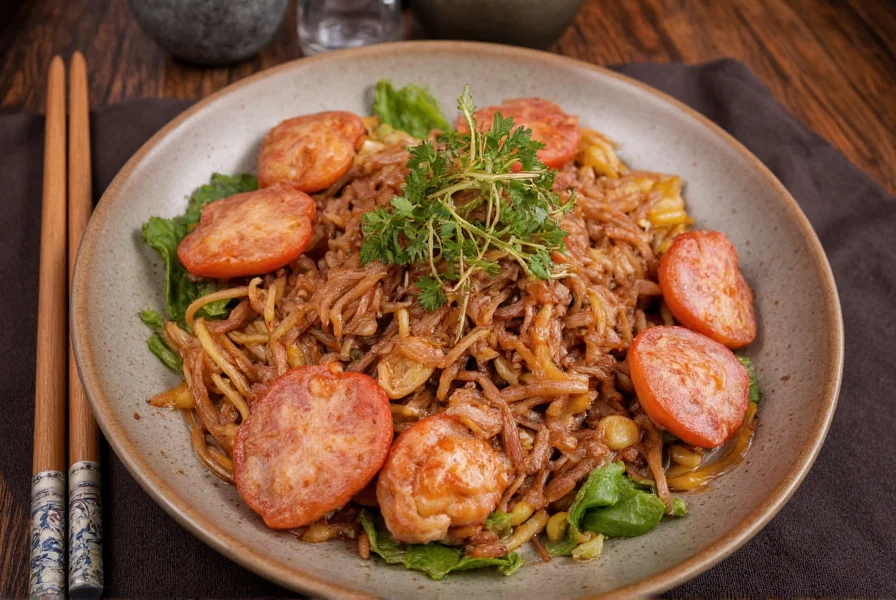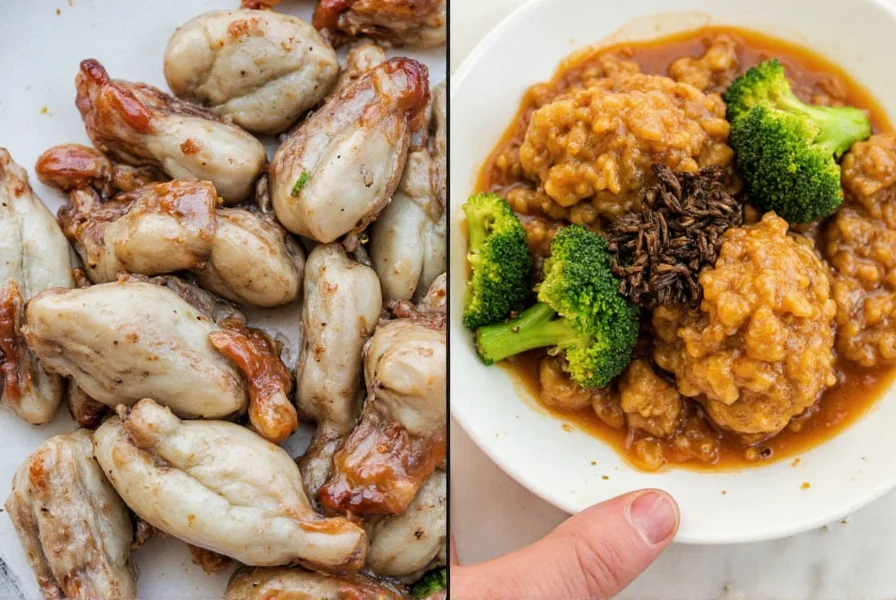Asian fusion cuisine has evolved significantly over the past three decades, with Wild Ginger restaurants emerging as pioneers in the movement. The original Wild Ginger in Seattle, established in 1989, set the standard for what has become a distinctive culinary category that thoughtfully combines Eastern and Western gastronomic traditions.
Understanding Asian Fusion Culinary Philosophy
Asian fusion represents more than just mixing ingredients from different cultures—it's a deliberate culinary approach that respects traditional techniques while introducing innovative elements. Wild Ginger restaurants exemplify this philosophy through their carefully curated menus that maintain authentic flavor profiles while incorporating unexpected ingredients and presentation styles.
The term "wild ginger" itself references Zingiber zerumbet, a rhizome used in Southeast Asian cooking that provides a distinctive citrusy, pine-like flavor different from common ginger. This ingredient symbolizes the restaurant's commitment to using authentic, sometimes unexpected, components in their dishes.
Key Characteristics of Wild Ginger Asian Fusion Cuisine
What distinguishes Wild Ginger establishments from other Asian fusion concepts? Several defining elements create their signature approach:
| Characteristic | Description | Example Dish |
|---|---|---|
| Authentic Foundation | Bases dishes in traditional techniques before innovating | Vietnamese spring rolls with house-made wrappers |
| Ingredient Integrity | Uses premium, often locally-sourced components | Wok-seared salmon with lemongrass and local vegetables |
| Cultural Respect | Avoids cultural appropriation through research and authenticity | Thai curry made with traditional mortar-and-pestle preparation |
| Innovative Presentation | Modern plating techniques while maintaining flavor balance | Deconstructed sushi with edible flowers and microgreens |
Historical Development of the Wild Ginger Concept
The Wild Ginger story began in Seattle's historic Pike Place Market in 1989, when owners Rick and Ann Yoder sought to create an authentic Southeast Asian dining experience that moved beyond the Americanized Chinese food prevalent at the time. Their research trips to Thailand, Vietnam, and Indonesia informed a menu that initially focused on regional specialties before evolving into the fusion concept recognized today.
Unlike many "Asian fusion" restaurants that emerged later, Wild Ginger maintained culinary integrity by employing chefs with authentic backgrounds and establishing direct relationships with ingredient suppliers in Asia. This commitment to authenticity while embracing creative interpretation became their hallmark.
Regional Variations in Wild Ginger Asian Fusion
While the Seattle location remains the most famous, the "Wild Ginger" name has been adopted by several independent establishments across North America, each interpreting the concept differently:
- Seattle, WA - Focuses on Vietnamese and Thai influences with Pacific Northwest ingredients
- Portland, OR - Incorporates more Japanese elements with Pacific seafood
- Denver, CO - Blends Korean and Chinese traditions with Rocky Mountain produce
- Toronto, ON - Features Southeast Asian flavors with Canadian agricultural products
These regional adaptations demonstrate how the core concept of Wild Ginger Asian Fusion remains flexible while maintaining essential culinary principles. Each location researches local ingredients while preserving authentic preparation methods.
What Makes Wild Ginger Different from Generic Asian Fusion?
Many restaurants use "Asian fusion" as a marketing term without culinary depth. Wild Ginger establishments distinguish themselves through:
First, their chefs typically have direct experience with Asian culinary traditions, often through family background or extensive training in Asia. Second, they maintain transparent sourcing practices, highlighting specific regional ingredients rather than generic "Asian" components. Third, their menus explain the cultural origins of dishes while noting creative adaptations.
When evaluating authentic Wild Ginger Asian Fusion experiences, look for restaurants that can articulate the specific cultural influences behind each dish and demonstrate respect for the original culinary traditions.
Evolving with Contemporary Dining Preferences
Modern Wild Ginger concepts have adapted to contemporary dining expectations while preserving their core identity. Many now offer:
- Seasonal tasting menus highlighting regional produce
- Vegetarian and vegan adaptations of traditional dishes
- Interactive dining experiences like chef's table events
- Sustainable seafood programs with traceable sourcing
- Cocktail programs featuring Asian-inspired spirits and mixers
These innovations demonstrate how the Wild Ginger Asian Fusion concept continues evolving while maintaining culinary integrity—a balance that has sustained its relevance in the competitive restaurant landscape.

Experiencing Authentic Wild Ginger Cuisine
For those seeking an authentic Wild Ginger Asian Fusion experience, consider these factors when selecting a restaurant:
Examine whether the menu specifies regional origins ("Northern Thai," "Hakka Chinese") rather than generic "Asian" labels. Check if the establishment provides information about chef backgrounds and ingredient sourcing. Authentic venues often feature educational elements about the cultural context of their dishes.
The most respected Wild Ginger restaurants maintain consistency in flavor balance—ensuring that innovative elements enhance rather than overwhelm traditional taste profiles. This careful equilibrium between tradition and innovation defines the highest expressions of Wild Ginger Asian Fusion cuisine.
What distinguishes Wild Ginger Asian Fusion from regular Asian restaurants?
Wild Ginger Asian Fusion restaurants intentionally blend culinary traditions from multiple Asian regions with Western techniques and ingredients, creating innovative dishes while maintaining authentic flavor foundations. Unlike traditional Asian restaurants that focus on a single cuisine, Wild Ginger concepts deliberately cross cultural boundaries with respect for each tradition's integrity.
Is Wild Ginger a single restaurant chain or multiple establishments?
Wild Ginger refers to multiple independent establishments, though the original and most famous location operates in Seattle's Pike Place Market. Several other restaurants across North America have adopted similar naming and concepts, though they are not formally connected. The Seattle location remains the benchmark for authentic Wild Ginger Asian Fusion cuisine.
What are signature dishes at authentic Wild Ginger restaurants?
Signature dishes typically include Vietnamese spring rolls with house-made wrappers, wok-seared seafood with lemongrass, Thai curries prepared using traditional mortar-and-pestle methods, and creative interpretations of regional specialties. Many locations feature tasting menus that showcase the evolution of Asian fusion cuisine through multiple courses.
How has Wild Ginger Asian Fusion influenced contemporary restaurant trends?
Wild Ginger restaurants pioneered the thoughtful approach to fusion cuisine that has influenced countless establishments. They demonstrated that successful fusion requires deep understanding of original culinary traditions rather than superficial mixing of ingredients. Their emphasis on ingredient integrity, cultural respect, and flavor balance established standards that continue shaping how chefs approach cross-cultural cooking today.
What should I look for to identify authentic Wild Ginger Asian Fusion cuisine?
Authentic Wild Ginger restaurants specify regional origins of dishes, employ chefs with direct experience in Asian culinary traditions, maintain transparent ingredient sourcing, and explain cultural context. They balance innovation with respect for traditional techniques, ensuring creative elements enhance rather than overwhelm authentic flavor profiles. Menus often include educational notes about the culinary heritage behind each dish.











 浙公网安备
33010002000092号
浙公网安备
33010002000092号 浙B2-20120091-4
浙B2-20120091-4